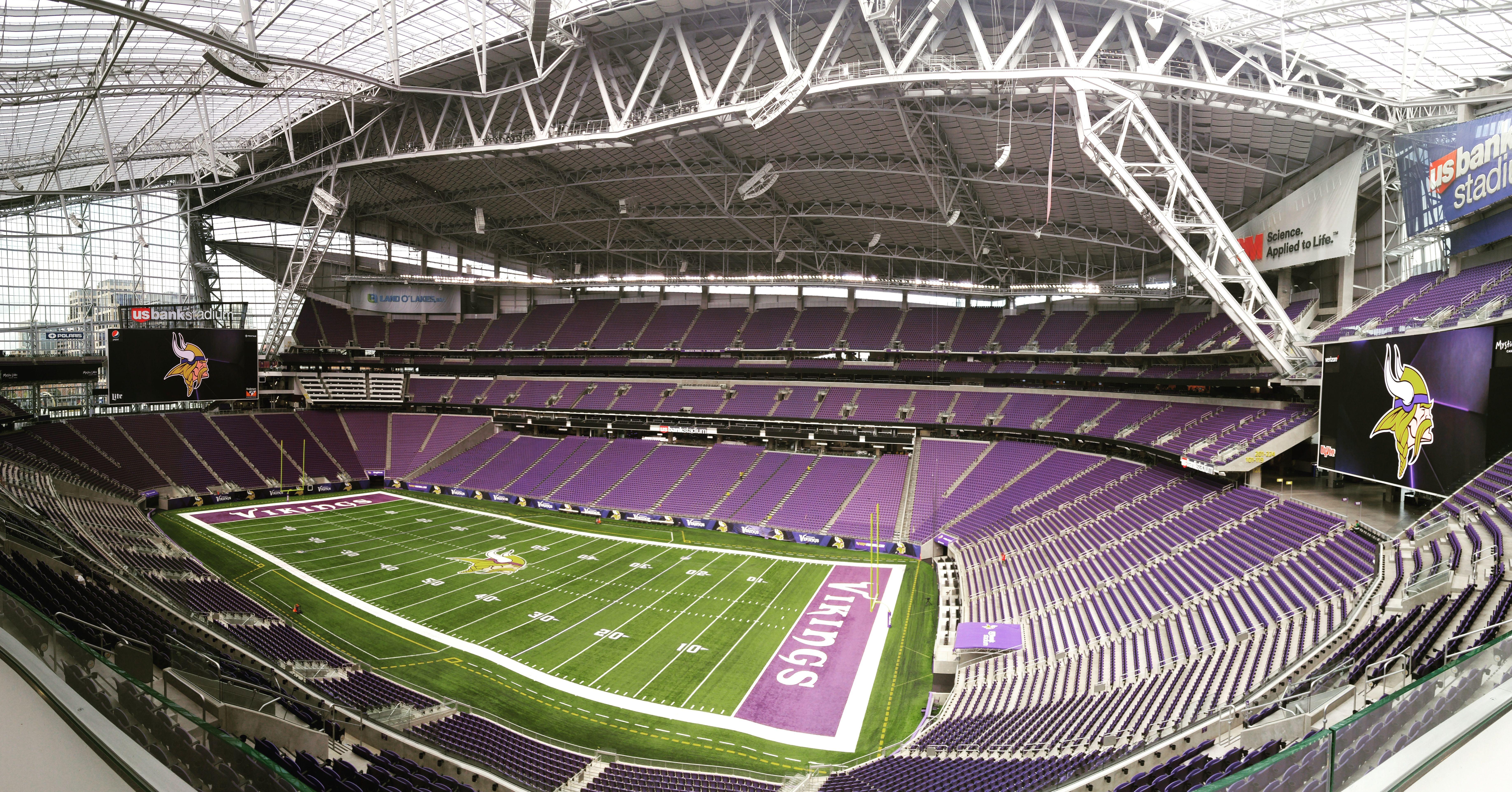US Bank Stadium is not just a sports venue; it’s a symbol of modern architecture and community pride in Minneapolis, Minnesota. Opened in 2016, the stadium has quickly become a centerpiece for sporting events, concerts, and cultural activities. With a seating capacity of over 66,000, it is home to the Minnesota Vikings of the NFL and was a host venue for Super Bowl LII in 2018. This article will take you on a journey through the history, design, and significance of US Bank Stadium, providing valuable insights into one of the most iconic structures in the Midwest.
In this comprehensive guide, we will explore various aspects of US Bank Stadium, including its architectural features, the technology that powers it, and the events that have taken place within its walls. We will also delve into the impact of the stadium on the local community and economy, ensuring that you understand why this venue is so much more than just a place to watch football.
Whether you're a sports fan, an architecture enthusiast, or simply curious about this landmark, this article is designed to provide an in-depth look at US Bank Stadium. Let’s dive into the fascinating world of this architectural marvel!
Table of Contents
- 1. History of US Bank Stadium
- 2. Architectural Features
- 3. Innovative Technology
- 4. Major Events Hosted
- 5. Community Impact
- 6. Sustainability Initiatives
- 7. US Bank Stadium Quick Facts
- 8. Conclusion
1. History of US Bank Stadium
The journey to the creation of US Bank Stadium began long before its doors opened in 2016. The Minnesota Vikings, established in 1960, played their home games in various stadiums until the need for a modern facility became evident. By 2007, discussions began about a new stadium to replace the aging Metrodome.
After years of negotiations and planning, the Minnesota state legislature approved funding for the stadium in 2012. The construction officially broke ground in 2013, and within three years, the vision became a reality. The stadium was designed to be a multi-purpose venue, accommodating not only football games but also concerts, soccer matches, and other events.
2. Architectural Features
US Bank Stadium is renowned for its striking design and innovative architecture. The building features a unique roof structure made of transparent ethylene tetrafluoroethylene (ETFE) material, allowing natural light to flood the interior while providing protection from the elements.
2.1 Design Elements
- Seating Capacity: 66,860 (expandable to 73,000 for special events)
- Unique Roof: ETFE panels create a translucent roofing system
- Exterior: A sleek, modern facade with sharp angles and glass walls
- Interior: State-of-the-art amenities and fan-friendly features
The design of US Bank Stadium reflects the spirit of Minnesota, incorporating local culture and history into its architectural elements.
3. Innovative Technology
One of the standout features of US Bank Stadium is its cutting-edge technology. The venue is equipped with a high-definition video board, one of the largest in the NFL, providing fans with an immersive viewing experience.
3.1 Smart Stadium Features
- Advanced Wi-Fi systems to ensure connectivity for fans
- Mobile app for easy navigation and access to amenities
- Innovative security systems for enhanced visitor safety
This technology ensures that US Bank Stadium remains at the forefront of modern sporting venues, enhancing the experience for all attendees.
4. Major Events Hosted
Since its opening, US Bank Stadium has hosted a variety of high-profile events, cementing its status as a premier venue in the United States. Notable events include:
- Super Bowl LII (2018)
- College Football Playoff National Championship (2020)
- Various concerts by artists such as U2 and Taylor Swift
The stadium not only serves as the home of the Minnesota Vikings but also attracts events from various sports and entertainment genres, bringing in thousands of visitors each year.
5. Community Impact
US Bank Stadium has made a significant impact on the local community and economy. The construction of the stadium created thousands of jobs, and its operation continues to generate economic activity in the Minneapolis area.
5.1 Economic Benefits
- Increased tourism and hospitality business
- Job creation during construction and ongoing operations
- Support for local businesses during events
Moreover, the stadium has become a gathering place for community events, further solidifying its role as a cultural hub.
6. Sustainability Initiatives
US Bank Stadium was designed with sustainability in mind, utilizing eco-friendly materials and energy-efficient systems. The stadium aims to reduce its carbon footprint and promote environmental stewardship.
6.1 Green Building Practices
- Use of recycled materials in construction
- Energy-efficient lighting and HVAC systems
- Water conservation measures
These initiatives not only benefit the environment but also enhance the overall experience for visitors and patrons.
7. US Bank Stadium Quick Facts
| Feature | Details |
|---|---|
| Location | Minneapolis, Minnesota |
| Opened | July 22, 2016 |
| Seating Capacity | 66,860 (expandable to 73,000) |
| Architectural Firm | HKS, Inc. |
| Cost | $1.1 billion |
8. Conclusion
US Bank Stadium is more than just a sports venue; it is a testament to innovative design, community engagement, and sustainability. From its impressive architectural features to its technological advancements, the stadium has set a new standard for multi-purpose venues. As it continues to host a wide array of events, it remains a crucial part of Minnesota's cultural and economic fabric.
We invite you to share your thoughts and experiences regarding US Bank Stadium in the comments below. If you enjoyed this article, consider sharing it with friends or exploring other related articles on our site!
Thank you for visiting our guide on US Bank Stadium! We hope to see you back soon for more exciting content.



